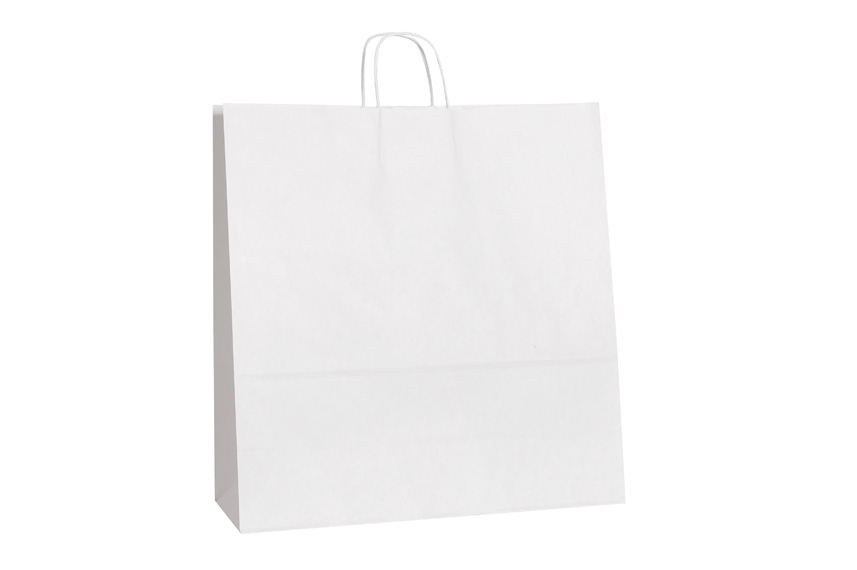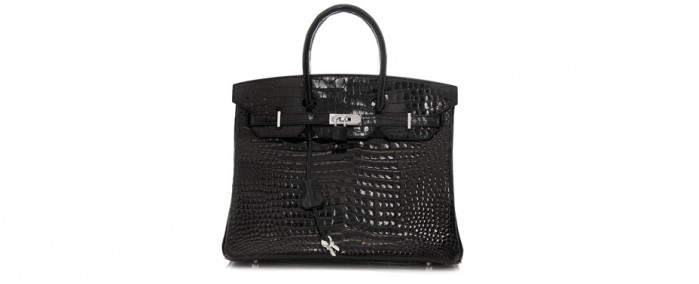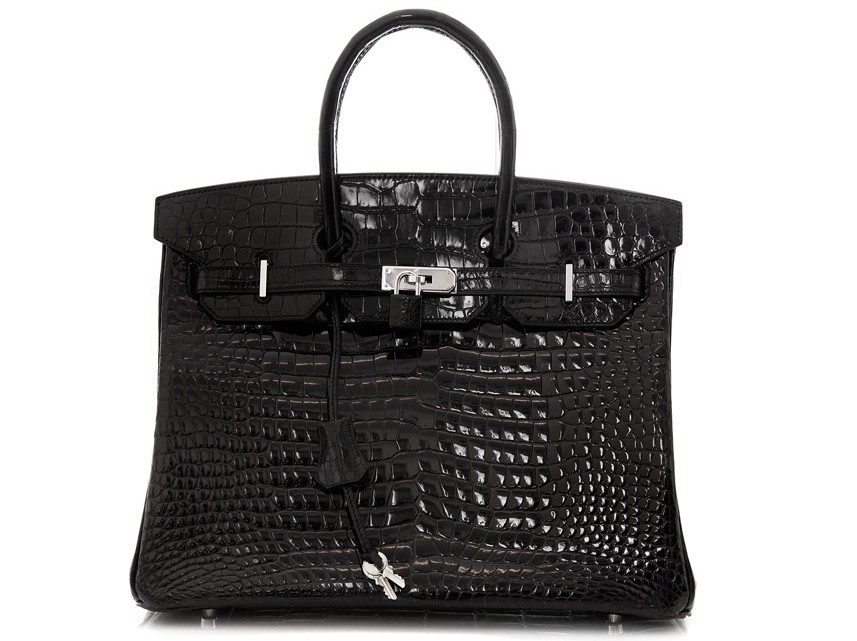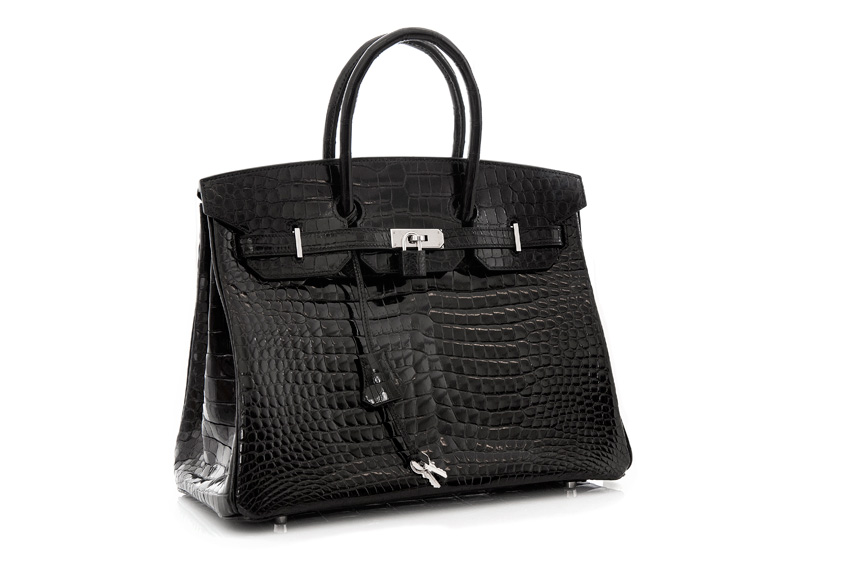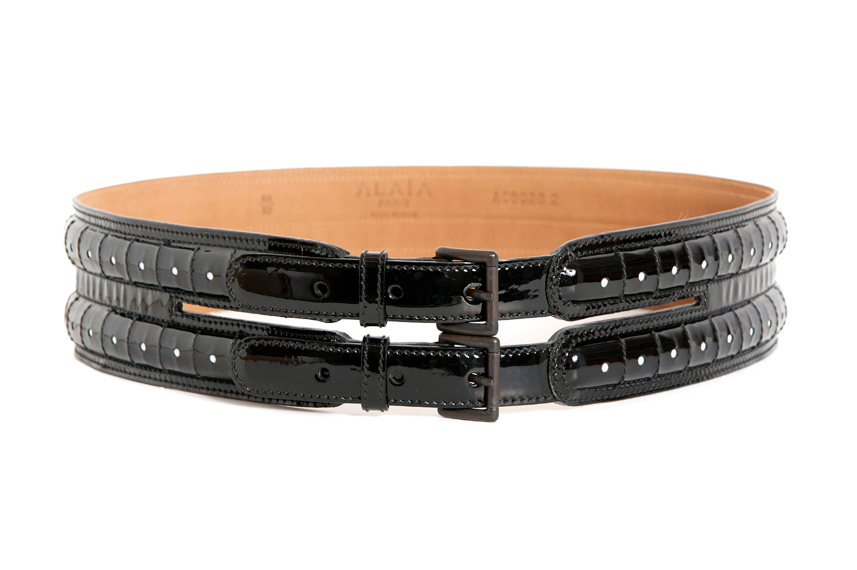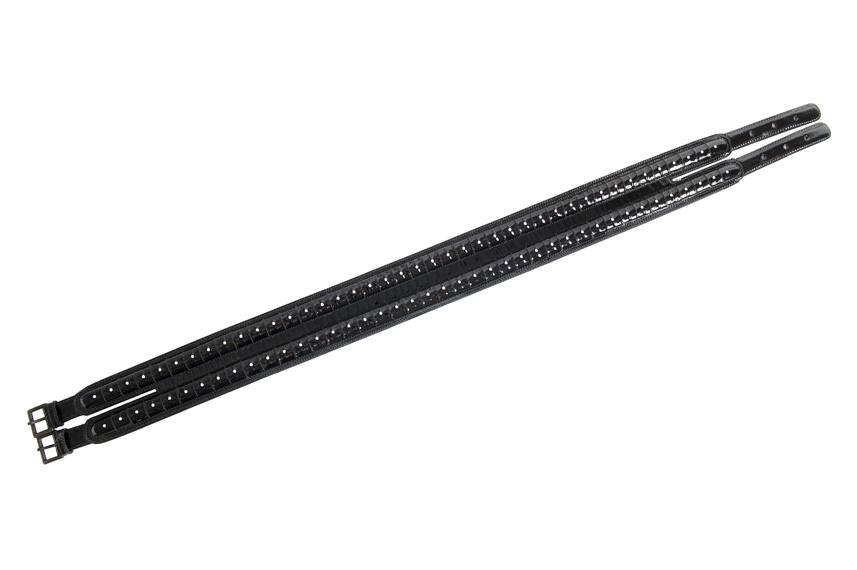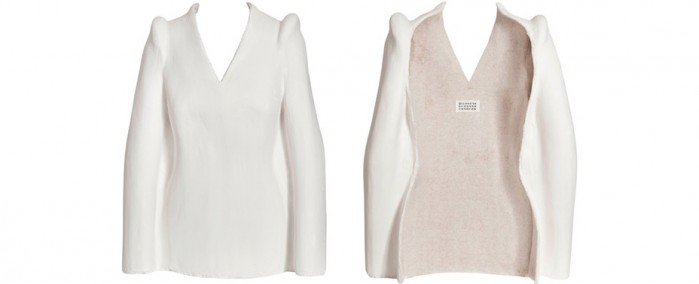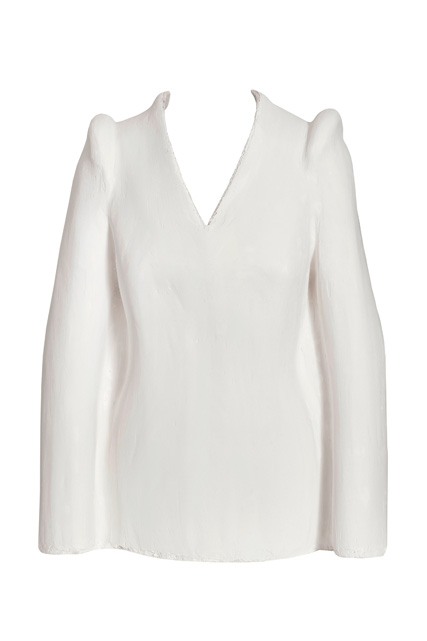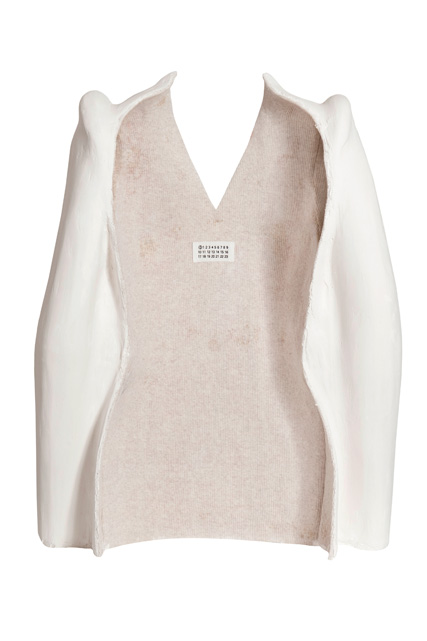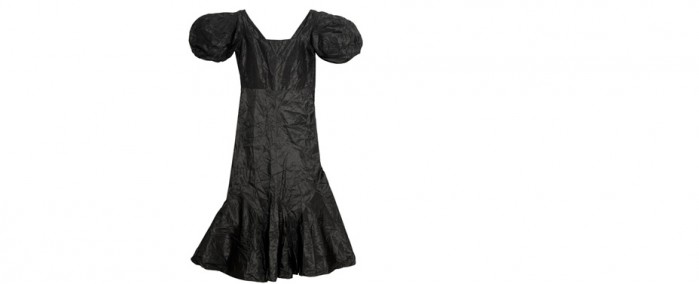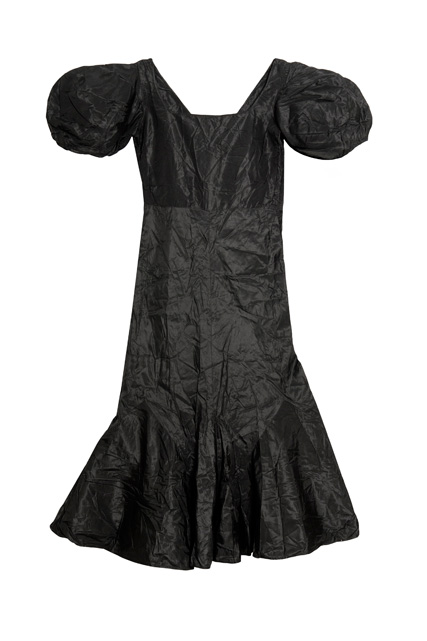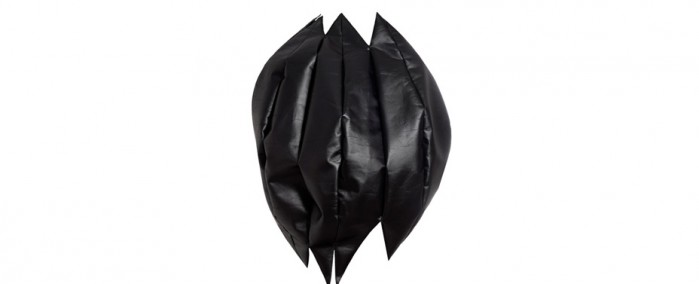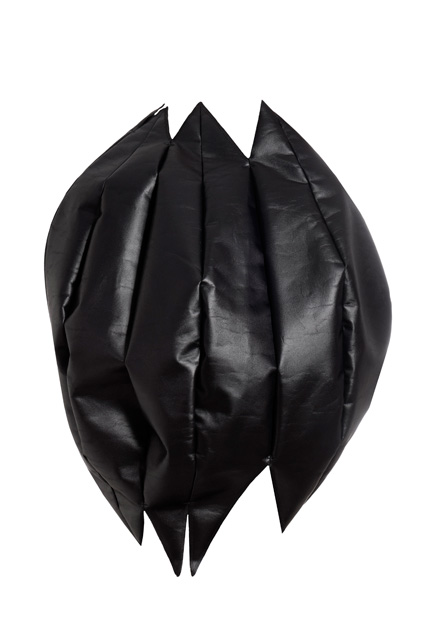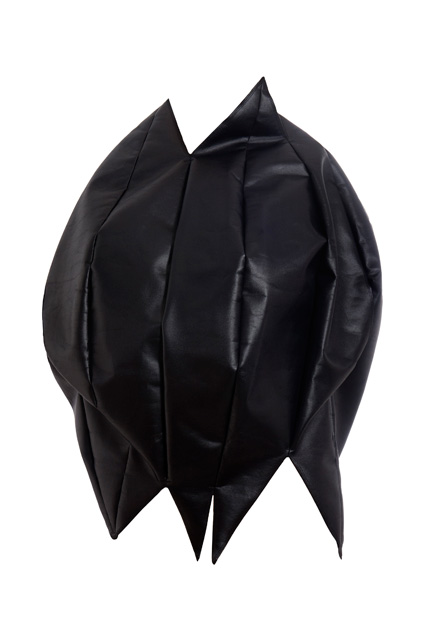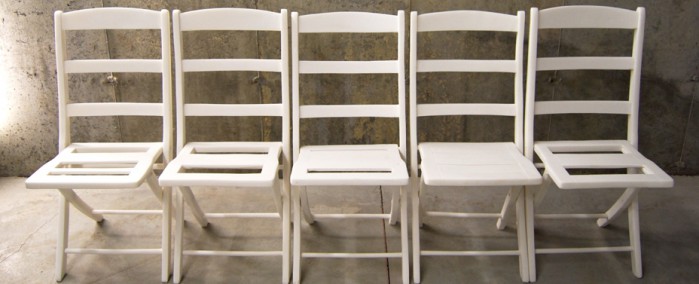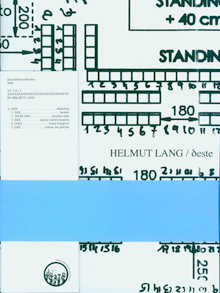Helmut Lang
A – SHAMEBAG
The year of 2009 in fashion will, in retrospect, be remembered for what happened beyond fashion and the effect it had on the flow of the expected curve ahead. In view of social and economic turmoil, the interruption of the expected became a matter of shock and survival, brought on by extraordinary financial stress both in fashion and the real world. Reflecting society—which is what fashion can do very quickly when it is at its best—was overrun by the obvious series of events. In turn, the consumer and the luxury industry had to come up with a band- aid while figuring out how to pursue consumption and survive as a consumer or as a brand. To talk boastingly and show off what one can afford is a healthy part of a booming economy, but within weeks of the financial collapse, no one really wanted to flash expensive things in other people’s faces. There is a certain sensitivity in response to a recession. Under these circumstances, the fashion year of 2009 invented the unmarked shopping bag. It is a first in terms of customers asking for a plain white paper bag in place of the prominent, iconic and branded shopping bags, which in consequence illustrates a reversal of the idea of a status symbol. Some of the clients just had recessional guilt as they could still afford shopping, while their friends or family members where not in the position to do so anymore. And for the regular high-end luxury clients—particularly the ones who might have taken an active part in the collapse of the economy—there might have been a French Fear Syndrome that the guillotine would make a comeback.
– Helmut Lang
Helmut Lang
ONE – HERMÈS
Object: Birkin crocodile porosus bag
Hermès, being the oldest luxury leather goods house, has always stood for impeccable quality and craftsmanship for all their products. They embody the idea of solid and iconic investment pieces that will be carried over many years and become even more valuable with time. The Birkin bag is one of these icons. Also, their philosophy and manifesto of repairing and reusing products plays with the idea of individuality and sustainability, going back to an aristocratic approach of valuing tradition. This approach has put Hermès in one of the best positions in handling the difficulties of a challenging year for all luxury brands, as clients turned to Hermès for reassurance and quality they can rely on.
Helmut Lang
TWO – AZZEDINE ALAÏA
Object: Patent leather belt
Azzedine is one of the true independent Créateurs who has managed to withstand editorial pressures and sustain his own unique business model and position in the fashion universe throughout the years, supported by a loyal crowd of fashion insiders and fashion journalists. Elitist as it may be, it ironically turned out to be also the right formula in a fashion world in crisis. One of his designs, beautiful without being spectacular, became extremely famous and also broadened Alaïa’s name immensely; a black belt, worn by First Lady Michelle Obama on several occasions. Her influence on fashion and popular American style is unprecedented. Her versatile and eclectic choice of designer fashion and high street, has created a new style and physical language for First Ladies as a true reflection of our times, portraying how the modern woman in general is applying fashion in a contemporary way. Her choice of embracing both American and international designers alike, as well as rather unknown or progressive designers, became an exercise of personal style that went against the absolute authority of the luxury fashion industry and luxury fashion magazines.
Helmut Lang
THREE – MAISON MARTIN MARGIELA
Object: Plaster cast of cotton lining jacket
This jacket, produced for S/S 2009, is a plaster cast of the first jacket Martin Margiela ever produced from S/S 1989. The inclusion of this piece, which is also representative of his iconic usage of white textured surfaces, highlights his undeniable relevance and enormous influence in fashion. It represents for Helmut Lang also a paradox reflecting a system that suddenly went into unexpected shock without the ability to move. Whatever the original intention behind the piece was, it illustrates Martin Margiela as the visionary man he has always been. His body of work has been so much more than fashion or clothing. Helmut Lang also sees the white surface of plaster as a chance for a new beginning, which a stagnant industry will need in order to stay interesting and maintain proper appreciation for creative ideas in defence of fashion derivatives.
Helmut Lang
FOUR – LOUISE BOURGEOIS
Object: Vintage dress from Louise Bourgeois’ personal wardrobe
Helmut Lang chose this simple but feminine black silk dress from Louise Bourgeois, which she kept with all her other clothes and items to be reused at a later point with the purpose of turning them into something else. This philosophy, which is generally the Anti-Christ of fashion, has become the survivor-chic formula in the first recession period of 2008-2009. As the realities of the current economic climate developed, the idea of keeping clothes for a longer period of time and turning to vintage garments became a significant trend. That shift was made much easier for the fashion crowd as it also embraces the idea of environmental and ecological consciousness and sustainable consumption, allowing people to enhance personal style with a positive approach.
Helmut Lang
FIVE – COMME DES GARÇONS
Object: Leather top
What is the future of black? This was the philosophical question that Rei Kawakubo might have pursued in her S/S 2009 collection, which was conceived and presented before the economic downfall. As one of the last independent Créateurs, she is intuitive as always, fearlessly experimental and of such an original mind. She has had widespread influence over generations of designers. As exclusive and particular as the Comme des Garçons client is, her ideas reach far down the fashion pyramid in endless watered down versions. As a symbol for this year, Helmut Lang chose this geodesic top, as it seems to predict that the world is losing its bottom and its top. This was probably not her intention, but looking back the curator found it quite visionary. In a sense, this choice is also made to highlight Helmut Lang’s respect for her entire body of work, but in particular for her undisturbed creative genius, which is perhaps once again unwillingly helping out an industry that has to reinvent itself.
Helmut Lang
INTERPRETATION
FRONT ROW
The front row is one of the ultimate hierarchical elements of the fashion industry. During the presentation of designer collections—attended by press and all other media, socialites and stars—it is simultaneously a place of achievement and a place of power. There is an archaic quality to it, similar to the one of an arena spectacle and the hierarchy of the pecking order. The arrangement and composition of the entire seating at the show is an equally amusing and dangerous game for the press office in terms of how they allocate positions or are forced to respect them. It is a very visible code, which is applied to every single one, and it is also the only moment where the entire evaluation is displayed in plain view of everyone. Naturally, the front row, as the word implies, is the definition of a leading position, which everyone in the media will try to achieve. It is comparable to the power lists or rankings established every year in other disciplines, but in the case of the front row, it is more personal and differs from one fashion house to another.
As in the hierarchy of the front row itself, there is the same linear system of “more or less important” as in the back rows, but it is the front row where the stakes of humiliation are at their are highest. The most prestigious seats are the ones where one has constant full view of the presentation, the right distance to the camera wall and the appropriate surrounding of one’s own entourage and other powerful colleagues or competitors. Paradoxically, the procedure is its own spectacle, and is as entertaining as the awaited performance itself. When the presentation room is entirely empty, filled with white chairs in their definitive order, there is already an atmosphere of expectation and judgement. Soon after, the empty venue is slowly invaded by the not so powerful first and only then, when there is a certain degree of expectation present, will the big players come in to receive the respect and envy of the others while giving them in return the thrill of their presence as they are guided to their seat in the front row.
Nevertheless, it is also an opportunity where the entire industry meets in one place to form a kind of common opinion as very few have a truly individual idea of judgement. Most need the reassurance of the collective feeling during the presentation, and many are using the front row as their guidance. In consequence, the white chair, which in essence is a regular object, becomes an utterly important one through its position and implication in this particular social showdown. This position or ranking, which will slightly change every six months, consequently also becomes, an arena of revenge, humiliation and glory.
– Helmut Lang

